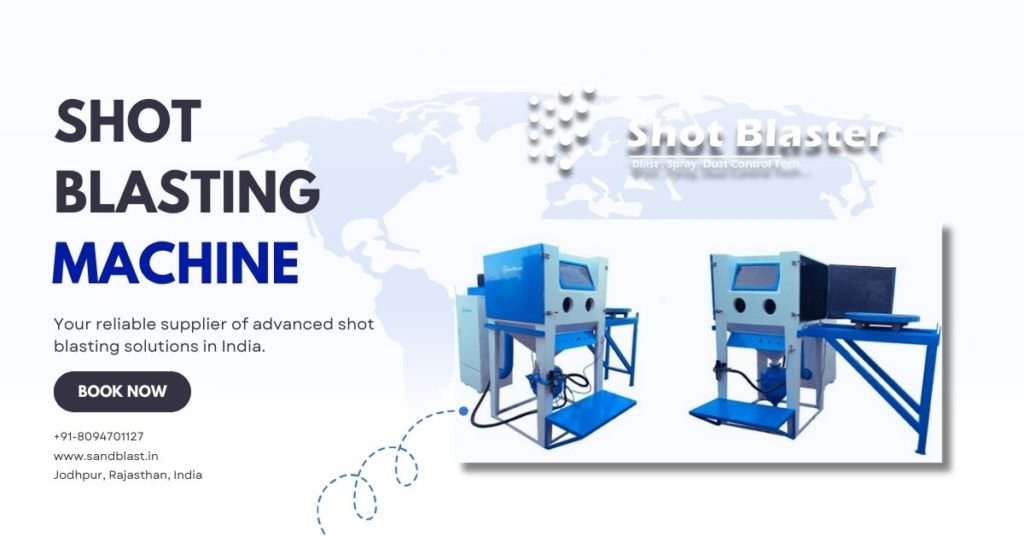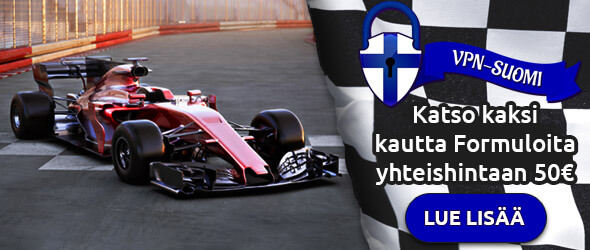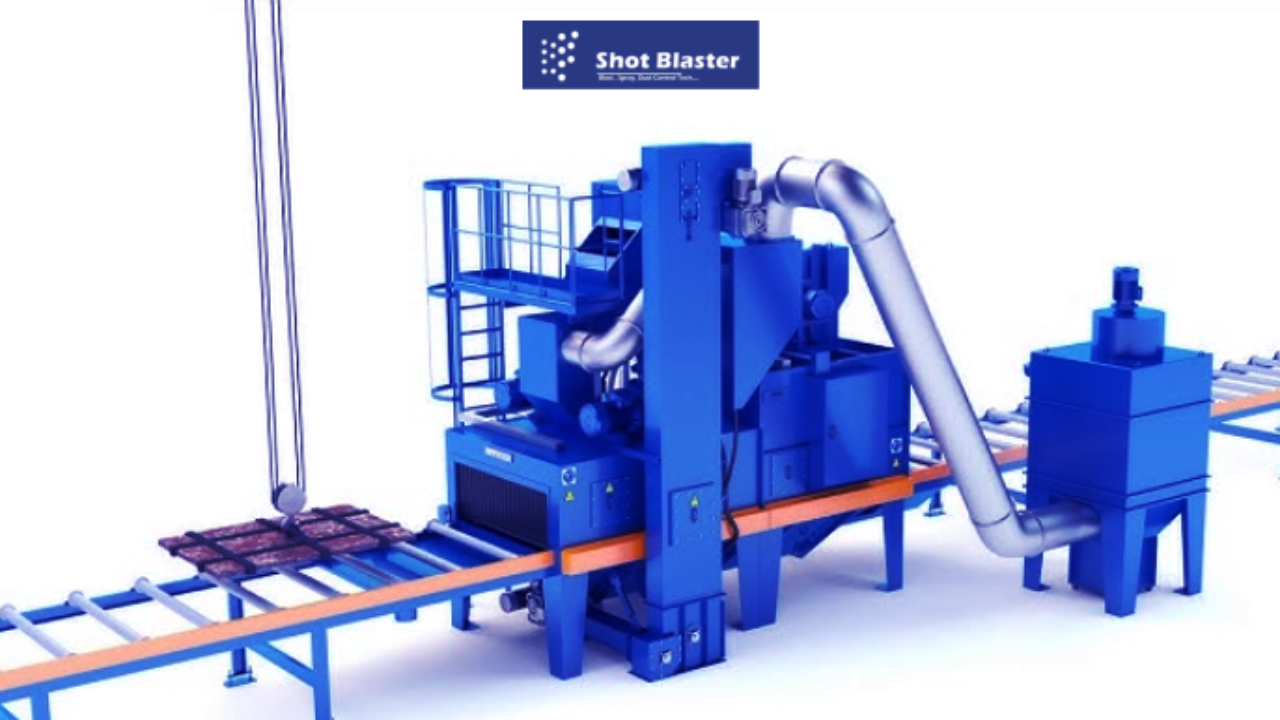Discover the essential parts of a shot peening machine, including the shot blaster, and understand how each component contributes to the industrial process. Learn how these parts enhance performance, durability, and efficiency in manufacturing applications.

Introduction
In the fast-paced world of industrial manufacturing, precision and durability are key drivers of success. One technique that plays a significant role in ensuring the longevity and strength of materials is shot peening. This process involves bombarding a surface with small, high-velocity particles, resulting in a hardened exterior that can withstand various stressors.
But what exactly makes shot peening effective? The answer lies in the components of the industrial shot peening machine, particularly the shot blaster. These machines come equipped with numerous parts that work harmoniously to produce optimal results.
In this article, we will take a deep dive into the 9+ industrial shot peening machine parts that are integral to the shot blasting process. We’ll explore each component, its function, and how it contributes to the overall performance of the machine. Whether you’re new to shot peening or looking to upgrade your machinery, understanding these parts is key to ensuring peak performance.
What Is Shot Peening?
Before we delve into the specifics of the shot peening machine parts, it’s essential to understand what shot peening is and why it’s so crucial in industrial settings. Shot peening is a cold working process where small spherical media, often referred to as “shots,” are blasted onto a surface at high speeds. This action creates small indentations or “dents” on the surface, which induces compressive residual stress. This compressive stress improves the material’s resistance to fatigue, stress-corrosion cracking, and wear.
The process is commonly used in industries such as aerospace, automotive, and metalworking to strengthen critical components like turbine blades, gears, and structural parts.
Industrial Shot Peening Machine Parts
1. Shot Blaster (The Heart of the Operation)
The shot blaster is arguably the most important part of the shot peening machine. It is responsible for propelling the shot media at high velocity onto the surface of the workpiece. This is achieved through a rotating wheel or air-driven systems, which generate the necessary speed for the media to make an impact.
- Function: Propels media onto the surface.
- Types: Includes centrifugal wheel blasters and air-powered shot peening systems.
- Importance: Without the shot blaster, the peening process would not take place.
A well-maintained shot blaster ensures even distribution of shots, guaranteeing consistent peening results. If you’re looking to improve efficiency and precision in your shot peening process, the condition of your shot blaster is crucial.
2. Shot Media (The Peening Agents)
Shot media refers to the small spherical particles used in shot peening. These can be made from various materials, including steel, ceramic, glass, or stainless steel, and their size and hardness play a significant role in the effectiveness of the shot peening process.
- Types: Steel shot, glass beads, ceramic shot.
- Purpose: Induces surface stress to improve material properties.
- Variability: Different sizes and hardness levels for specific applications.
The choice of media affects the depth and intensity of the indentations created on the workpiece surface. For optimal results, selecting the correct shot media is essential based on the workpiece material and desired outcome.
Also Check – https://sites.google.com/view/sbriyasingh258/news-updates/shot-blasting-a-cost-effective-surface-treatment-solution
3. Turbine Wheel Assembly (Shot Propulsion System)
A turbine wheel assembly is responsible for transferring rotational energy to the shot media. The assembly typically consists of a set of blades, which spin at high speeds to create the necessary force to propel the media toward the workpiece.
- Function: Transforms rotational energy into kinetic energy for shot propulsion.
- Maintenance: Requires periodic maintenance to ensure blades remain intact and perform efficiently.
The turbine wheel’s quality and design directly impact the effectiveness of the shot peening process. If the turbine is damaged or worn out, the entire shot blasting system may be compromised, leading to inconsistent results.
More insights – https://riyasingh258.blogaaja.fi/reliable-shot-blasting-machine-provider-company-in-india/
4. Abrasive Feed System (Media Distribution)
This part ensures that shot media is continually fed into the shot blasting machine in a controlled and consistent manner. The feed system must be capable of handling different types of shot media, from steel shots to glass beads, without causing blockages or inconsistent flow.
- Function: Ensures a continuous, consistent supply of shot media.
- Designs: May include a gravity-based feed or an auger system.
- Importance: A poorly functioning feed system can lead to an uneven distribution of shots, affecting the quality of the peening process.
5. Control Panel (Machine Operations)
The control panel is where operators manage the various aspects of the shot peening machine. From adjusting the shot velocity to controlling the speed of the turbine wheel, the control panel is essential for fine-tuning the process.
- Functions: Provides settings for shot velocity, timing, and intensity.
- Modern Features: May include touch-screen interfaces, programmable controllers, and automated systems.
A modern control panel can help reduce the risk of human error, enabling operators to adjust the settings with precision and ensuring the shot peening process runs smoothly.
6. Dust Collection System (Maintaining Cleanliness)
During the shot peening process, a lot of dust and debris is produced as the media impacts the workpiece. A dust collection system is crucial for maintaining a clean and safe work environment by removing airborne particles.
- Function: Removes dust and debris from the air.
- Components: Typically includes filters, fans, and collection bins.
- Importance: Helps prevent damage to the machine and keeps the workspace safe.
Having an efficient dust collection system also prevents the buildup of debris inside the machine, which could negatively impact the shot peening process.
7. Shot Peening Cabinet (Housing the Process)
The shot peening cabinet is where the actual shot blasting occurs. It serves as a protective enclosure that contains the media, workpieces, and machinery. These cabinets are typically made of durable materials like steel and may have a special coating to resist the abrasive nature of shot media.
- Function: Houses the shot peening process and protects surrounding areas.
- Design Features: Includes windows for operators to observe the process and doors for easy access to the workpiece.
A well-constructed shot peening cabinet is essential for safety and efficiency, ensuring that the media does not escape and causing harm to the surroundings.
Next article – https://riyasingh258.blogaaja.fi/shot-blasters-best-shot-blasting-equipment-solutions-in-india/
8. Rotary Table or Fixture (Positioning the Workpiece)
To ensure uniform exposure to the shot media, the workpieces must be rotated or moved throughout the shot peening process. This is where the rotary table or fixture comes in, providing a way to securely hold the parts while they rotate or oscillate.
- Function: Ensures uniform exposure of the workpiece to the shot media.
- Types: Fixed, rotary, or oscillating tables depending on the application.
- Significance: Allows for even coverage of the workpiece surface, avoiding under or over-peening.
The proper alignment of the workpiece on the table ensures that the shots hit every area of the surface, leading to consistent and effective results.
9. Parts Feeder and Conveyor System (Efficient Workflow)
For large-scale industrial operations, the efficiency of the shot peening process can be increased with an automated parts feeder and conveyor system. These systems help load the workpieces into the machine and move them through the peening process without requiring manual intervention.
- Function: Automates the loading and unloading of workpieces.
- Efficiency: Reduces manual labor and increases throughput.
- Integration: Can be synchronized with other machinery for seamless operations.
This system is particularly useful when dealing with high-volume production environments, helping to maintain consistent quality while improving overall productivity.
Related Article – https://sites.google.com/view/sbriyasingh258/news-updates/choosing-the-best-shot-blasting-machine-for-your-industry-needs
FAQs About Shot Peening Machine Parts
Q1: How often do shot peening machine parts need maintenance?
A1: Regular maintenance is critical for all components, especially the shot blaster and turbine wheel. Typically, maintenance should be done every 1,000 hours of operation or as recommended by the manufacturer to ensure peak performance.
Q2: What type of shot media should I use for my shot peening process?
A2: The choice of shot media depends on the material you’re working with and the desired effect. Steel shot is commonly used for general purposes, while ceramic beads are preferred for more delicate applications.
Q3: Can a shot peening machine be customized for specific applications?
A3: Yes, shot peening machines can be customized based on the application, such as adjusting the shot velocity, media size, and workpiece handling system. It’s important to consult with manufacturers for the best options.
Conclusion
Understanding the 9+ industrial shot peening machine parts is essential for optimizing the shot peening process. Each component, from the shot blaster to the dust collection system, plays a critical role in ensuring the machine operates at peak performance. Whether you’re involved in aerospace, automotive, or metalworking industries, maintaining these parts and selecting the right materials can significantly enhance the efficiency and durability of your machinery.
By investing in high-quality shot peening machines and performing regular maintenance, you can ensure the longevity of your parts and improve the overall strength of the materials you’re working with. Always remember, a well-oiled machine is a productive machine!



Leave a Reply